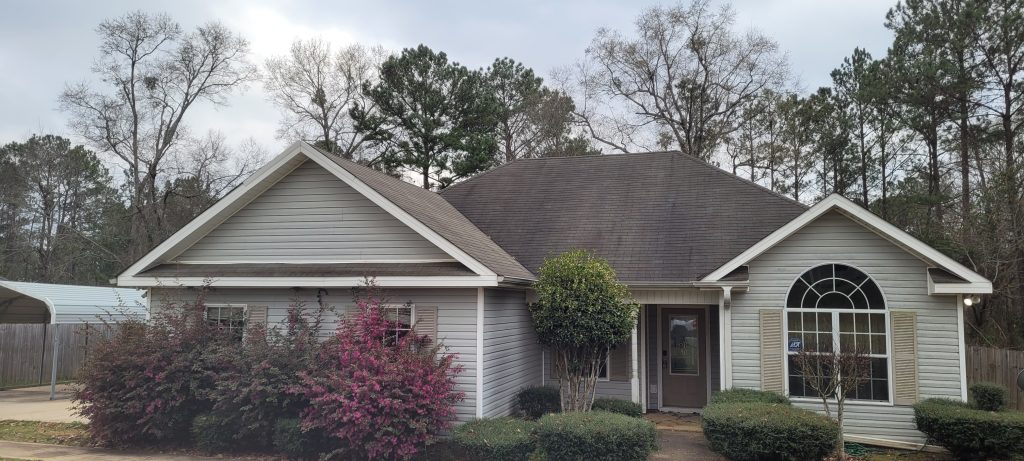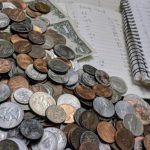Which is better, a house flip or a BRRRR investment? I’ve been investing in real estate for over 15 years and have done both. I will show you the pros and cons and teach you which strategy is better.
BRRRR and Flipping houses are both excellent strategies for investing in real estate. A BRRRR results in long-term cash flow, tax benefits, and appreciation, while a flip is a short-term investment with a quick return. Both methods share the same fundamentals, and a good investor will have both in their arsenal.
There is no clear winner. Both methods have a lot of similarities but different exit strategies. Specific markets and special deals lend themselves to one more than the other. A skillful real estate investor should understand each approach and know when to pick a particular strategy. Let me show you how to do this.
What is the BRRRR Method?

BRRRR. It doesn’t mean that it’s cold. The BRRRR strategy is an acronym for “Buy, Rehab, Rent, Refinance, Repeat.” It is a popular strategy real estate investors use to acquire and finance rental properties.
The BRRRR Process
Buy
The first step of the brrrr process is to buy the property at a significant discount to market value. Finding these properties is the most challenging step of this process and of all real estate investing.
Renovate
After you buy, you renovate or somehow improve the property to increase its value and appeal to potential renters.
Rent – Passive Income
Once you have a newly renovated property, you find tenants and generate rental income. You are now a landlord.
Refinance – Cash-out Refinance
After a seasoning period, you refinance the house based on the appraised value, which allows you to take a lump sum of cash. This cash represents a large portion of the equity in the property.
Refinancing is a crucial step. This is how you realize the equity in the property. As a result of the refinance, you reduce the monthly cash flow provided by the property, but the lump sum payment compensates you. As your mortgage is paid down, your home equity will increase, and you can later refinance to pull out more equity.
Repeat
The final step is to repeat. Use the equity and cash flow from the first property to repeat the process and acquire an extensive real estate portfolio.
Funding
A BRRRR investment works well with conventional lenders, allowing you to get a lower-interest 30-year fixed-rate mortgage. However, the initial purchase is often not eligible for a traditional mortgage because of the house’s condition. Instead, work with community banks for a construction loan enabling you to purchase and renovate the property. Once the house is complete, refinance it with a conventional mortgage.
The BRRRR investors use this approach to generate a one-time windfall and build a rental property portfolio while minimizing their upfront capital investment and maximizing their return on investment. In addition, holding real estate for the long term can provide tax benefits. The best is that your lump sum from the refi is not income; it is not taxed.
What is Flipping a House?

House flipping is a real estate investment strategy that involves purchasing a property to renovate or improve it and then reselling it quickly for a profit. The goal of house flipping is to buy low, make improvements, and sell high in a relatively short period.
The Flipping Process
Buy
Buying the house-flipping property is no different from purchasing a BRRRR property. This typically involves purchasing distressed or undervalued properties, such as foreclosures or properties needing significant repairs or updates.
Renovate
As with a BRRRR property, after you buy, you renovate it, increasing its value and appeal to potential buyers. However, when renovating to resale, you will often need to make the house nicer than your would for a BRRRR.
Sell
This is where flipping deviates from BRRRR. After you complete the renovation, you sell the house and take a lump sum, but with a BRRRR, you would continue holding the house as a rental unit.
Funding
Funding a flip house is most often done with a conventional mortgage. However, due to the short-term nature of the project, many flips are funded with cash or a home equity line on another property.
House flipping can be risky as it requires a significant amount of upfront capital and carries the risk of unexpected costs and delays during the renovation process. It also requires a deep understanding of the local real estate market and a keen eye for identifying undervalued properties. Despite the risks, house flipping can be a profitable investment strategy for those with the skills, resources, and expertise to successfully locate and renovate properties for resale. To see how a flip actually works, check out this flip house I am working on now.
What’s Better: BRRRR or Flipping?

Whether flipping or BRRRR is better depends on the investor’s goals, skills, and resources. Some investors may prefer faster returns house of flipping, while others may prefer the long-term income from building a rental portfolio with BRRRR. To determine the winner of BRRRR vs. house flip, carefully evaluate each strategy’s pros and cons and choose the one that aligns with your investment objectives and risk tolerance.
Pros and Cons of the BRRRR Method
| Pros | Cons |
| Tax Deductions | Dealing with Tenants |
| Eligible for 1031 Exchange | Handling Maintenance and Repairs |
| Appreciation | Reduced Cash Flow |
| Passive Income for Rent | |
| Tax-Free Income from Mortgage |
Pros and Cons of the Fix and Flip
| Pros | Cons |
| Faster Profits | Higher Taxes with Short-Term Income |
| No Tenants | Not Eligible for 1031 Exchange |
| No Ongoing Maintenance and Repairs | Subject to Market Fluctuations |
BRRRR and House Flipping depend on finding great deals and managing renovation projects. After that, a BRRRR investor becomes a landlord and is rewarded with a lump sum of tax-free cash from the refinance. On the other hand, the flipper is rewarded with a lump sum from the sale and has no further responsibilities.
BRRRR vs. House Flip? One strategy is not better than the other. Both generate revenue and can help an investor build wealth. It’s up to the individual real estate investor to decide where their skills and tolerances lie.
Selecting Properties

Whether flipping or using brrrr, selecting the properties is similar. The type of property you should buy will depend on various factors, such as your budget, the local market conditions, the level of competition, and the style of renovations you are willing to undertake.
In general, a real estate investor should look for distressed properties. A distressed property is a property in disrepair, financial hardship, or legal trouble, making it difficult to sell at market value. Below are some property categories where an investor may find an excellent deal.
Foreclosures: Properties that the lender has foreclosed due to the owner’s inability to pay the mortgage. These are generally bank-owned properties listed for sale by a realtor.
Short Sales: Properties where the owner owes more on the mortgage than the property is worth and needs to sell it for less than what is owed.
Probate: Properties that are part of an estate sale after the owner dies.
Properties in Default: Properties where the owner has missed mortgage payments and is in danger of foreclosure.
BRRRR vs. a house flip has one thing income: buying below-market real estate. When an investor finds a potentially discounted property, they must perform due diligence to ensure that the property will work as a brrrr or flip. This includes ascertaining the after-repair value and ensuring the house will have enough equity after the repairs are factored in.
Invest with Little or No Money

The most challenging aspect of investing in real estate is finding a property at the right price. You must find a property where the purchase price plus renovation costs are significantly less than the appraisal value. This isn’t easy to do, but finding these rare deals is the key to success.
When a real estate investor buys properties significantly below the market value, they have many more options. With a significant discount, attracting partners is easier, and securing funding is more straightforward. Purchasing considerably below the property value is the primary prerequisite for using no-money techniques.
The BRRRR Method with No Money
Using the BRRRR method without a lot of money is more difficult than it is with a flipping strategy. The reason is that a BRRRR deal is long-term, and most no-money techniques are geared toward short-term investments.
In some cases, a Debt Service Coverage Ratio (DSCR) loan can be used to finance a BRRRR property. A DSCR loan is a hard-money loan based on the project’s cash flow instead of the borrower’s financials. A DSCR loan usually requires a down payment, but the equity you received by purchasing below market value will often replace that initial contribution.
It isn’t easy to use a business partner for a BRRRR project. Long-term projects are not a good fit for partnership, and you will unlikely find a partner willing to tie up their cash for the long term. However, the is the third R in BRRRR is refinance. A BRRRR investor could use a business partner for the renovation stage, then refinance the property paying off the business partner.
Flip a House with No Money
Using a business partner is the best way to flip a house without money. If you have found a great deal, you should be able to find a business partner with money. After all, the partner also realizes that finding the property is the hardest part of the process. The short-term nature of flipping houses is ideal for a partnership.
A hard money loan is also a great option to flip a house without any money. Hard money lenders make loans based on the fundamentals of the deal instead of the borrower’s financial ratios and creditworthiness. Interest rates are higher than a conventional mortgage, and the term will be much shorter, sometimes as short as six months. However, if you have found a great deal, you should be able to meet the stringent loan-to-value ratios required by these private lenders. For more information, see my guide to flipping houses without money.
How Does BRRRR Differ from Rental Properties
BRRRR is a hybrid investment strategy similar to flipping and owning rental properties. Like a flip, the investor seeks out properties that need renovation or repair, aiming to increase the property’s value through these improvements. And like a rental, the investor plans for a positive cash flow to provide rental income while the property appreciates over time.
Another difference between BRRRR and rental properties is the financing strategy. With BRRRR, investors typically use short-term, high-interest loans to purchase and renovate the property, with the intention of refinancing to a longer-term, lower-interest loan once the renovations are complete. This allows them to pull out some of the equity they have built up in the property for the next investment. In contrast, rental property investors may use traditional financing options such as a long-term rental loan to purchase the property and then use the rental income to pay down the mortgage over time.
Check out my ultimate guide to buying rental property.
Conclusion
This article has explained the BRRRR investment strategy and the house-flipping approach. It has presented the pros and cons of each approach and explained some of the funding options. In addition, it touched on the differences between BRRRR and rental houses. The reader should now know everything they need to know about BRRRR investing and house flipping.
What’s better, Brrrr investing vs. a house flip? There is no winner. Both methods can be profitable investment strategies when used under the appropriate circumstances.




